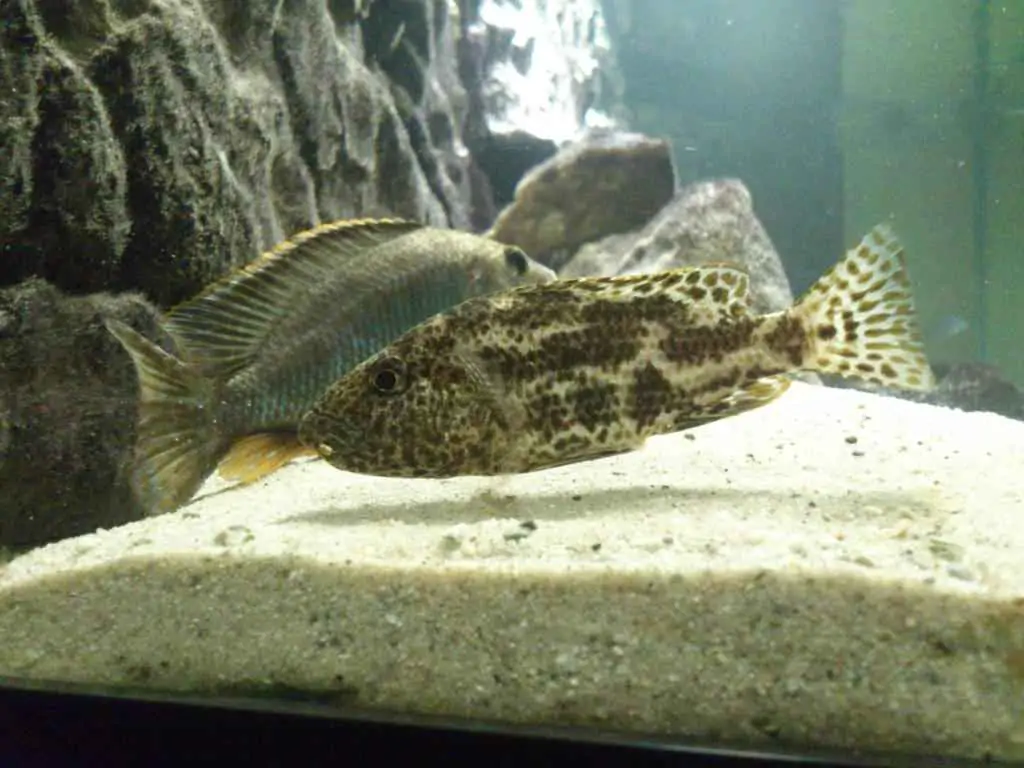Nimbochromis polystigma
The Nimbochromis polystigma was first described by Regan in 1922. The genus name Nimbochromis can be divided into two parts: Nimbus after the Latin stormy or rainy and the Greek chromis which means fish. A reference to the dark cloud-like spots on their bodies. The species name polystigma can be divided into two words: polus which means many and stigma means spot or mark, a reference to the many spots on the body and fins.
Synonyms: Haplochromis polystigma, Cyrtocara polystigma, Haplochromis polistigma, Haplochromis maculimanus, Cyrtocara maculimanus, Nimbochromis maculimanus, Haplochromis pardalis, Cyrtocara pardalis, Nimbochromis pardalis, Haplochromis livingstonii, Paratilapia modesta.
Description
Nimbochromis Polystigma is found in Lake Malawi in groups of 20 to 50 specimens as well as swimming alone. When they swim in groups, they traverse the environment like a pack of wolves, devouring everything in their path. When they are alone, they hunt, just like the Nimbochromis livingstonii, by pretending to be dead, without lying on their side. Sexually active males turn dark blue and their spotting pattern disappears completely. Sexually active males abstain from feeding, instead they defend their breeding grounds very actively. It is believed that if they swim around in their blue breeding colors, the hunting method does not work due to the loss of camouflage colors.
Compared to other species that are at least as large, it is a fairly peaceful species. Males are very active towards the females. It is therefore advisable to keep a male with several females. Smaller fish are seen as food.
The aquarium
The aquarium should be set up with rocks to create hiding places. Here the females can escape the attention of the male for a while. Use (filter) sand on the bottom. In the middle, you should leave very much free swimming space.
Diet
Large live food (e.g. earthworms) should be given as food. Fish meat and dry food are also accepted.
Breeding Nimbochromis polystigma
Breeding is fairly simple. Up to 20 eggs are laid and then taken into her mouth by the female. They are then fertilized by the male using the egg spot method. After hatching, the young are intensively guarded by the mother for at least a week and are taken into the mouth at night. The young can be raised on Artemia nauplii.
Video
The mating dance of the Nimbochromis polystigma captured in a series of photos by Nicky Jeup:
Authors
John de Lange
Jan Bukkems – Aquavisie
Copyright images
Nicky Jeup

























Reviews
There are no reviews yet.